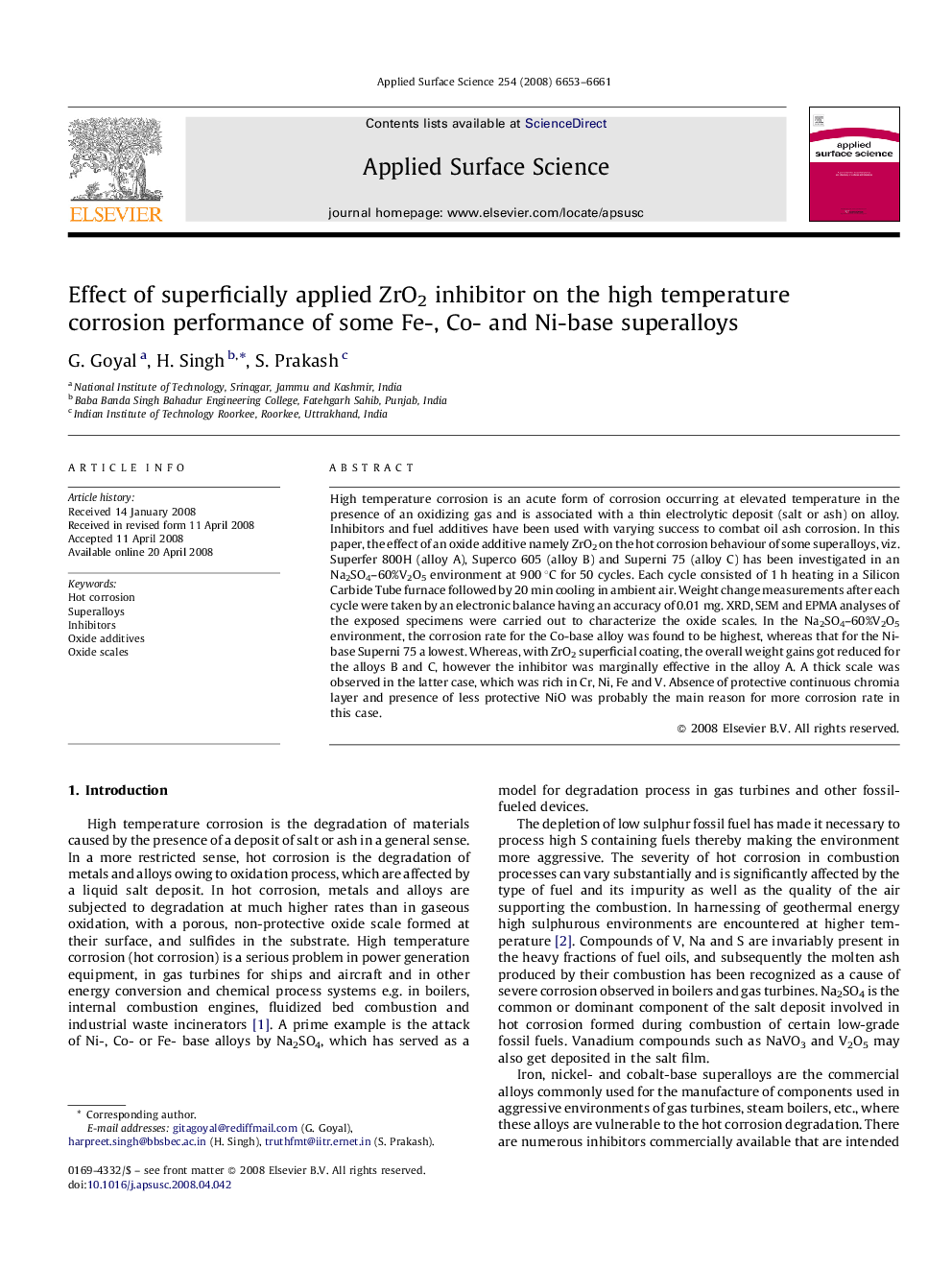| Article ID | Journal | Published Year | Pages | File Type |
|---|---|---|---|---|
| 5361981 | Applied Surface Science | 2008 | 9 Pages |
Abstract
High temperature corrosion is an acute form of corrosion occurring at elevated temperature in the presence of an oxidizing gas and is associated with a thin electrolytic deposit (salt or ash) on alloy. Inhibitors and fuel additives have been used with varying success to combat oil ash corrosion. In this paper, the effect of an oxide additive namely ZrO2 on the hot corrosion behaviour of some superalloys, viz. Superfer 800H (alloy A), Superco 605 (alloy B) and Superni 75 (alloy C) has been investigated in an Na2SO4-60%V2O5 environment at 900 °C for 50 cycles. Each cycle consisted of 1 h heating in a Silicon Carbide Tube furnace followed by 20 min cooling in ambient air. Weight change measurements after each cycle were taken by an electronic balance having an accuracy of 0.01 mg. XRD, SEM and EPMA analyses of the exposed specimens were carried out to characterize the oxide scales. In the Na2SO4-60%V2O5 environment, the corrosion rate for the Co-base alloy was found to be highest, whereas that for the Ni-base Superni 75 a lowest. Whereas, with ZrO2 superficial coating, the overall weight gains got reduced for the alloys B and C, however the inhibitor was marginally effective in the alloy A. A thick scale was observed in the latter case, which was rich in Cr, Ni, Fe and V. Absence of protective continuous chromia layer and presence of less protective NiO was probably the main reason for more corrosion rate in this case.
Related Topics
Physical Sciences and Engineering
Chemistry
Physical and Theoretical Chemistry
Authors
G. Goyal, H. Singh, S. Prakash,
